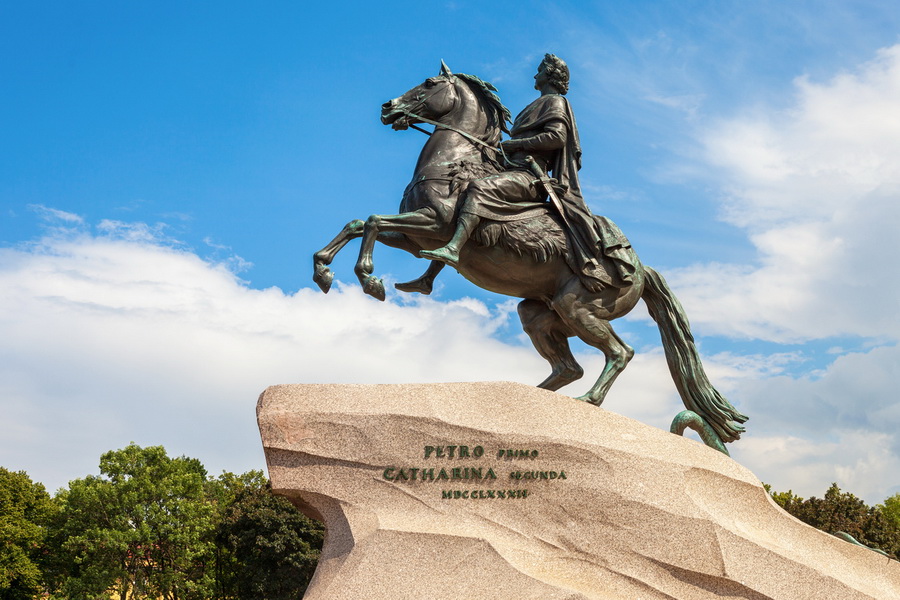In the heart of Saint Petersburg, standing proudly on the banks of the Neva River, is one of Russia’s most iconic and revered sculptures: “The Bronze Horseman.” This magnificent statue, created by the renowned sculptor Étienne Maurice Falconet, has captured the imagination of generations with its powerful symbolism and timeless beauty. In this article, we embark on a journey to explore the history, significance, and cultural impact of “The Bronze Horseman,” shedding light on its enduring legacy in Russian art and history.
The History of “The Bronze Horseman”:
Commissioned by Empress Catherine the Great in 1766 to honor the legacy of her predecessor, Peter the Great, “The Bronze Horseman” is a tribute to the founder of Saint Petersburg and the visionary leader who transformed Russia into a modern European power. Falconet, a French sculptor renowned for his mastery of the medium, was chosen to create the monumental statue, which was to serve as a symbol of Peter the Great’s enduring legacy and the greatness of the Russian Empire.
Construction of the statue began in 1770 and took nearly twelve years to complete. Falconet faced numerous challenges during the process, including the immense technical difficulties of casting such a large bronze sculpture and the pressure to capture the spirit and likeness of Peter the Great with precision and accuracy. Despite these challenges, Falconet persevered, and in 1782, “The Bronze Horseman” was unveiled to the public with great fanfare and celebration.
Symbolism and Meaning:
“The Bronze Horseman” is imbued with layers of symbolism and meaning that resonate deeply with the Russian psyche and national identity. At its core, the statue is a tribute to the visionary leadership of Peter the Great and his transformative impact on Russian history. The towering figure of Peter the Great, mounted on a rearing horse, symbolizes strength, power, and determination, reflecting the emperor’s unwavering commitment to modernization and progress.
The placement of the statue on the Senate Square, overlooking the Neva River and facing towards the west, holds further significance. It is said that Peter the Great envisioned Saint Petersburg as Russia’s “window to the west,” a gateway to European culture, commerce, and influence. By situating the statue on the banks of the Neva River, Falconet pays homage to Peter’s grand vision and his enduring legacy as the architect of Russia’s westernization.
Moreover, “The Bronze Horseman” serves as a potent symbol of Russian resilience and defiance in the face of adversity. The statue survived the ravages of war, revolution, and political upheaval, remaining steadfast as a symbol of national pride and unity throughout Russia’s tumultuous history. During the Siege of Leningrad in World War II, the statue stood as a beacon of hope and inspiration for the city’s beleaguered residents, a testament to the enduring spirit of the Russian people in times of crisis.
Cultural Impact and Legacy:
“The Bronze Horseman” has left an indelible mark on Russian art, literature, and culture, inspiring countless artists, writers, and intellectuals over the centuries. Alexander Pushkin, Russia’s greatest poet, immortalized the statue in his epic poem of the same name, which tells the story of a humble clerk named Yevgeny who is haunted by the ghostly presence of Peter the Great. Pushkin’s poem is a meditation on power, destiny, and the eternal struggle between man and history, and “The Bronze Horseman” serves as a powerful symbol of Russia’s past and its uncertain future.
In addition to its literary significance, “The Bronze Horseman” has become an enduring symbol of Saint Petersburg, beloved by residents and visitors alike. The statue’s imposing presence on the city’s skyline, framed against the backdrop of the Neva River and the historic buildings of the Admiralty and Winter Palace, is a sight to behold and a source of pride for the people of Saint Petersburg.
“The Bronze Horseman” stands as a testament to the enduring power of art to capture the essence of a nation and its people. With its majestic beauty, profound symbolism, and rich cultural legacy, the statue continues to inspire awe and reverence in all who behold it. As a tribute to the visionary leadership of Peter the Great and a symbol of Russian resilience and pride, “The Bronze Horseman” holds a special place in the hearts of Russians and remains one of the most iconic and cherished sculptures in the world.


